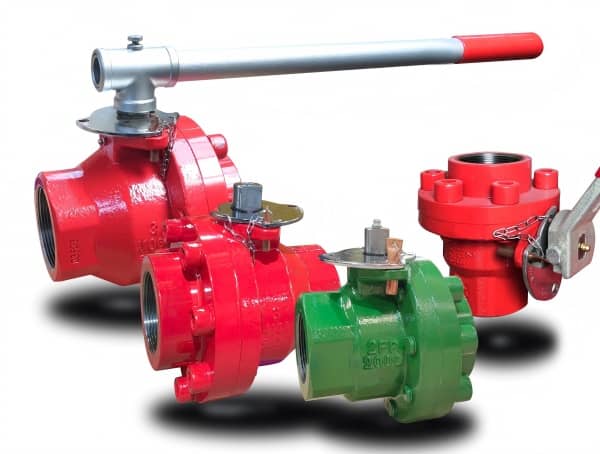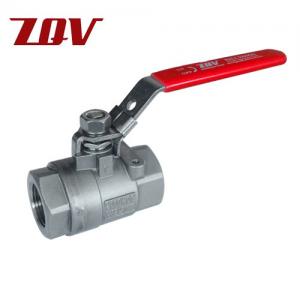The Unyielding Heartbeat of Industry: Bolt Body Ball Valves Built to Withstand Extreme Pressure
In the relentless pulse of modern industry – where pipelines snake across continents, drilling rigs plunge deep into the earth, and complex processing plants hum with energy – controlling the flow is paramount. And when that flow involves high-pressure fluids or gases demanding absolute reliability, the choice of valve isn't just an equipment decision; it's a fundamental commitment to safety, efficiency, and operational integrity. This is where the robust engineering of Bolt Body Ball Valves, specifically designed for pressures like 2000psi, 3000psi, and 5000psi in materials such as Ductile Iron and Carbon Steel, steps into the spotlight as the unsung hero.
Beyond the Standard: The Bolt Body Distinction
While standard ball valves are workhorses, the bolt body design represents a significant leap in strength and security for demanding environments. Unlike single-piece or welded body constructions, the bolt body valve features a robust body assembled using high-tensile strength bolts. This fundamental design principle offers critical advantages:- Unmatched Pressure Containment: The bolted construction allows for significantly thicker body walls and superior distribution of internal stresses. This inherent strength is precisely what makes these valves capable of reliably containing the immense forces encountered at 2000 psi, 3000 psi, and the formidable 5000 psi rating. They are engineered not just to hold pressure, but to do so cycle after cycle, year after year.
- Enhanced Safety & Reliability: The bolted design creates a highly secure pressure boundary. Should extreme, unforeseen pressure events occur (though these valves are built to prevent them), the bolted joints offer a more predictable failure mode compared to welded bodies, enhancing overall system safety. Features like blow-out proof stems are standard, ensuring operator safety even under full pressure.
- Superior Sealing Integrity: High-pressure applications demand flawless sealing. Bolt body valves utilize advanced, resilient seat designs (often reinforced PTFE, PEEK, or metal) compressed effectively within the robust body structure. This ensures zero leakage across the ball and stem seals, even under the most punishing pressure surges and temperature variations.
- Maintenance & Serviceability: While built for longevity, industrial equipment eventually requires attention. The bolt body design allows for in-line maintenance. Without removing the entire valve from the pipeline, technicians can access internal components (seats, stem seals, ball) by simply unbolting the body halves. This drastically reduces downtime and maintenance costs, a crucial factor in continuous operations.
Conquering Pressure: 2000psi, 3000psi, 5000psi – Finding the Perfect Match
Understanding the pressure rating is critical for safe and effective valve selection:
- 2000 PSI Bolt Body Ball Valves: These are the backbone for numerous demanding applications. Think high-pressure water systems, hydraulic power units, compressed air distribution (industrial plants), moderate-pressure steam lines, chemical injection skids, and process lines in refineries and chemical plants where robust, reliable shut-off is essential. They offer a significant step up from standard industrial valves.
- 3000 PSI Bolt Body Ball Valves: Stepping into even more rigorous territory. This rating is ideal for higher-pressure hydraulic systems (especially in heavy machinery, marine applications, and offshore), wellhead control panels, high-pressure gas transfer (CNG, inert gases), aggressive chemical processing, and demanding oilfield service. They provide the extra margin needed for systems prone to pressure spikes or operating near the upper limits of 2000 psi designs.
- 5000 PSI Bolt Body Ball Valves: The pinnacle of high-pressure ball valve technology. These are engineered for the most extreme environments: ultra-high-pressure hydraulic systems (subsea equipment, aerospace testing), critical well control equipment (BOP stacks, choke/kill lines), specialized gas compression and transfer (CO2 injection, hydrogen), high-pressure quenching systems, and demanding R&D or testing facilities. When failure is not an option at crushing pressures, 5000 psi bolt body valves are the proven solution.
Material Mastery: Ductile Iron vs. Carbon Steel – Strength Where it Counts
The valve body material is the first line of defense against pressure and corrosion. Bolt Body Ball Valves excel in two key materials for high-pressure service:
- Ductile Iron (DI): Offering an exceptional balance of strength, toughness, and cost-effectiveness. Ductile iron provides superior impact resistance compared to cast iron and excellent pressure-bearing capabilities, readily meeting 2000 psi and 3000 psi requirements across a wide temperature range. Its inherent corrosion resistance (often enhanced by coatings like epoxy) makes it suitable for many water, oil, gas, and less aggressive chemical services. Ideal where robust performance and value are priorities.
- Carbon Steel (CS): The undisputed champion for the highest strength and temperature tolerance. Carbon steel bodies are mandatory for 5000 psi applications and are the preferred choice for 3000 psi in highly critical or corrosive services (especially with appropriate lining or hardening). CS offers superior tensile and yield strength, handles higher temperatures, and provides excellent resistance to mechanical stress and abrasion. It's the material of choice for sour service (H2S environments), high-temperature steam, critical hydrocarbon processing, and offshore/subsea applications. Common grades include A216 WCB or LCC.
Where Reliability is Non-Negotiable: Key Applications
Bolt Body Ball Valves are the trusted solution across industries where pressure, safety, and uptime are paramount:
- Oil & Gas: Wellheads, production manifolds, test separators, choke/kill lines, pipeline pigging, compression stations, refinery process lines (high-pressure sections).
- Chemical & Petrochemical: High-pressure reactor feed lines, catalyst injection, critical process control, aggressive chemical transfer.
- Power Generation: High-pressure feedwater, steam vents and drains, turbine bypass systems, hydraulic control systems.
- Industrial Manufacturing: Ultra-high-pressure hydraulic presses, waterjet cutting intensifier systems, large compressor discharge, high-pressure cleaning systems.
- Marine & Offshore: Shipboard hydraulic systems (steering, thrusters), offshore platform process lines, subsea controls.
- Water & Wastewater: High-pressure pump discharge, deep well applications, desalination plants, pipeline booster stations.
- Mining: Hydraulic roof supports, high-pressure slurry transport, dewatering systems.





